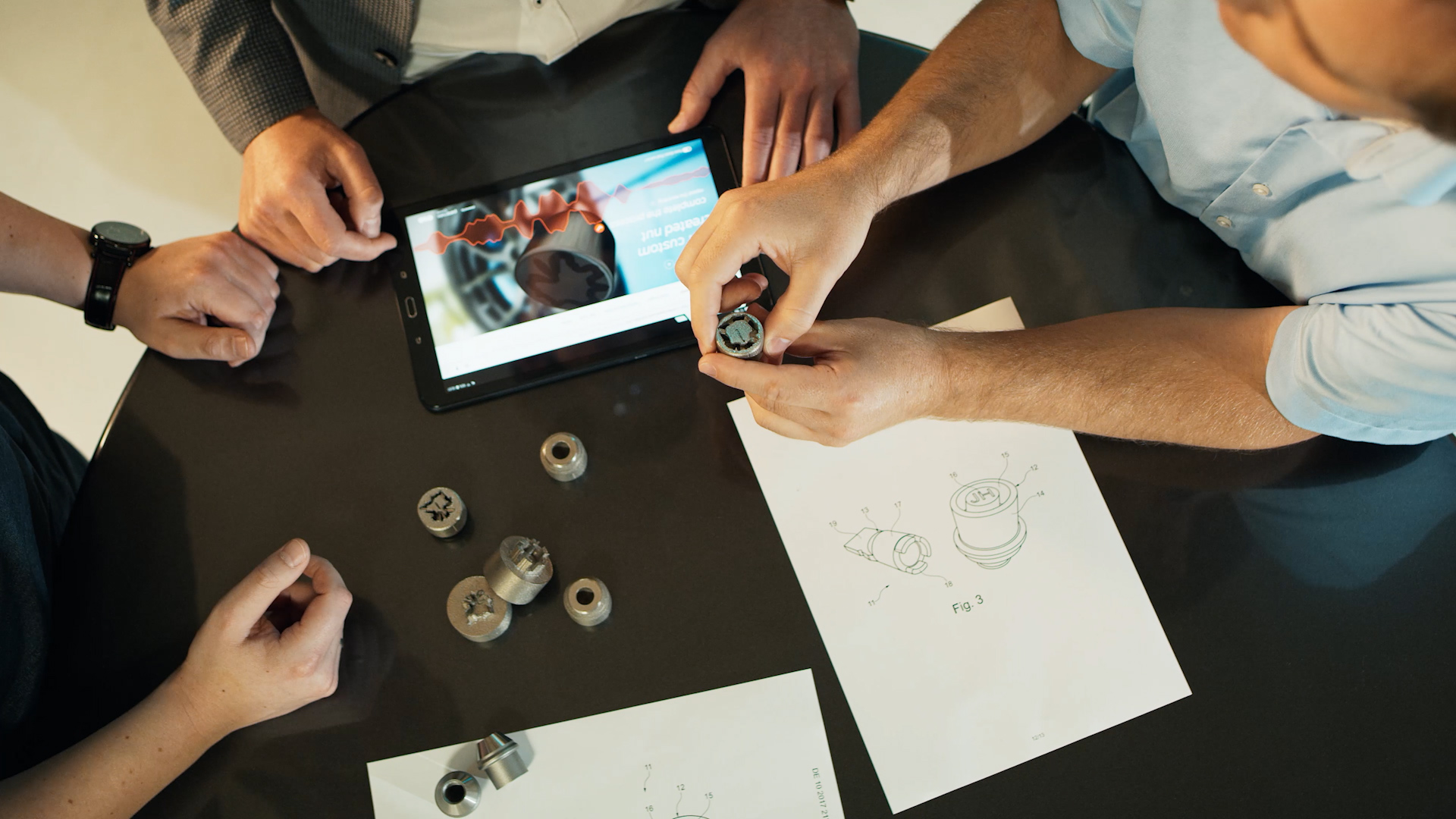Ford Motor Company and EOS are combating alloy wheel theft with unique 3D printed locking wheel nuts designed using a driver’s voice.
A singular soundwave collected from this vocal recording is converted into a 3D printable pattern indented into the nut and key components, which can not be loosened with standard tools.
“It’s one of the worst experiences for a driver, to find their car up on blocks with all four wheels gone,” said Raphael Koch, research engineer, Advanced Materials and Processes, Ford of Europe.
“Some alloy wheels can cost thousands to replace, but these unique rim nuts will stop thieves in their tracks. Making wheels more secure and offering more product personalization are further proof that 3D printing is a game-changer for car production.”
Under 3D printed lock and key
Locking wheel nuts are used to secure the wheels of a vehicle, which can be unscrewed with the key supplied with them. According to IAM RoadSmart, formerly known as the Institute of Advanced Motorists, locking wheel nut removal tools have become more accessible as a result of the cars being bought and sold without passing down these components.
As a result, alloy wheels have become a target for thieves as they can use these tools to loosen and remove a car’s wheels, which can then be valued at around $2600. By basing the nut and key design on a driver’s voice, Ford is aiming to provide a system that can not be removed using standard equipment. The company states that the nut and key are designed as one piece, then 3D printed using acid and corrosion-resistant stainless steel on an EOS M 290 metal DMLS 3D printer.
Following this, the parts are separated and then ground so that it is ready for use. In addition, the components feature unevenly spaced ribs inside the nut as well as widening indentations that prevent a thief from making a wax imprint of the vocal pattern. These 3D printed components can be made in five days, a significant reduction from the previous eight-week turn-around.

Additive and automotive
The American automotive company has previously explored the applications of metal additive manufacturing with its 3D printed aluminum manifold inlet. Much like the 3D printed lock and key nuts, this part took five days to complete. It was additively manufactured on a Concept Laser X LINE 2000R.
Prior to this, Ford Global Technologies LLC, the patent management and copyrighting arm of the Ford Motor Company, filed an application detailing a method of making lightweight brake discs using laser deposition welding, a relative of laser metal deposition (LMD).
Looking for a career in additive manufacturing? Visit 3D Printing Jobs for a selection of roles in the industry.
Featured image shows the 3D printed locking wheel nuts. Photo via Ford.
